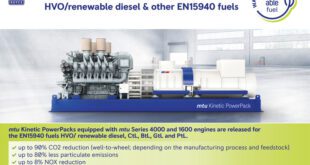 Barack Obama’s Energy Policy – Campaign 2008
Barack Obama’s Energy Policy – Campaign 2008
* Energy ANWR: The Arctic National Wildlife Refuge is a protected area in northern Alaska that contains substantial supplies of oil and gas. Conservatives favor drilling ANWR to extract the oil, while liberals favor maintaining its protected status.
* Deregulation Crisis: California suffered ‘rolling blackouts’ in 2001 due to insufficient energy supplies. California had partially deregulated its energy industry, by freeing retail prices, but maintaining controls on wholesale prices. Conservatives favor full deregulation and/or building more energy supply as a solution; liberals favor conservation and better regulation of energy delivery systems.
* Energy Conservation: Americans are by far the least energy-efficient people in the industrialized world, primarily due to the heavy reliance on personal automobiles. Liberals favor ongoing efforts toward conservation, via more efficient automobiles and appliances, as well as voluntary usage restrictions; the goal is to avoid the need for additional energy imports or oil drilling.
* Alternative Energy: The federal government regularly funds research into solar power, wind power, wave power, biomass power, and other alternative energy sources, but none are competitively priced with gas and oil at the present time. Liberals contend that gas and oil prices are kept artificially low by federal intervention (including military action in the Mideast), which results in policy prescriptions like President Clinton’s proposed ‘BTU Tax’ in the early 1990s, intended to foster alternative energy development.
Address to the Detroit Economic Club – Energy
Obama TV Commercial
Washington Post coverage of Barack Obama energy policy:
What types of regulations and guidelines do you plan on implementing or promoting in order to deal with climate change and to make our country less oil dependent?
Global warming is not just the greatest environmental challenge facing our planet — it is one of our greatest challenges of any kind. Combating global warming will be a top priority of my presidency, and I will attend to it personally. Putting a price on carbon is the most important step we can take to reduce emissions. I will enact an economy-wide market-based cap-and-trade system to reduce U.S. carbon emissions by 80 percent by 2050. I will devote significant resources from a permit auction toward accelerating the development and deployment of low carbon technologies and addressing the economic challenges imposed on key industrial sectors. Another top priority for my energy and global warming agenda will be changing the cars we drive and the fossil fuels we burn. I will increase fuel efficiency standards by 4% per year, lift the 60,000-per-manufacturer cap on buyer tax credits to encourage more Americans to buy ultra-efficient vehicles, and encourage automakers to make fuel efficient hybrid vehicles. Domestic automakers will get either assistance shouldering their health care legacy costs in exchange for investing 50 percent of the savings into technology to produce more fuel-efficient vehicles or generous tax incentives for retooling assembly plants. I proposed a National Low Carbon Fuel Standard to reduce the lifecycle greenhouse gas emissions of passenger vehicle fuels sold in the U.S. by 10 percent in 2020 and require additional reductions of 1% annually thereafter.
Should the government have a role in encouraging development of energy efficient technologies and sustainable energy resources? If yes, how would you do it?Yes, I will dramatically increase federal investment in advanced clean-energy technologies and energy efficiency. I believe that the U.S. can and should be a global leader in the development of alternative energy sources, such as ethanol and other biofuels, as well as wind and solar. We should set benchmarks for production so that more companies will invest in production and create distribution facilities where the average consumer can access biofuels for cars designed to run on them. And I believe nationally we must get more energy from renewable sources and support a goal of 20% renewable energy by 2020. We have vast potential in this country to produce clean renewable energy and reduce our reliance on dwindling domestic natural gas reserves. The investment certainty provided by a significant RPS will encourage innovation, bring down the costs of renewable power, encourage necessary investment in new transmission, inspire new domestic industries, and strengthen rural economies. I will also create the 5-E (Energy Efficiency, Environmental Education and Employment) Disconnected Youth Service Corps. This program will directly engage disconnected and disadvantaged youth in energy efficiency and environmental service opportunities to strengthen their communities while also providing them with practical skills and experience in important career fields of expected high-growth employment. The program will engage private sector employers and unions to provide apprenticeship opportunities.
 Alternative Energy HQ solar power for homes, wind energy, and bio fuel issues
Alternative Energy HQ solar power for homes, wind energy, and bio fuel issues






